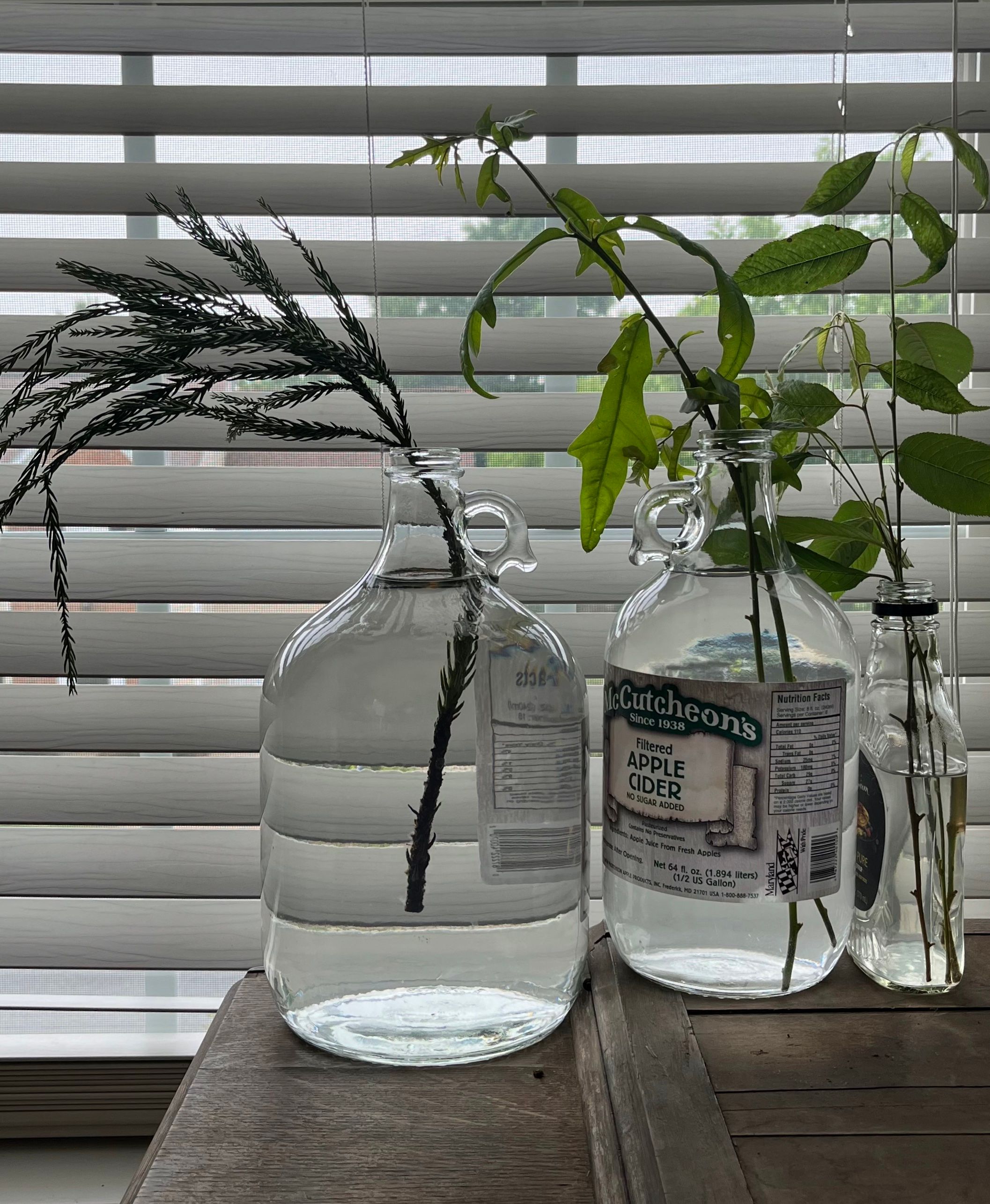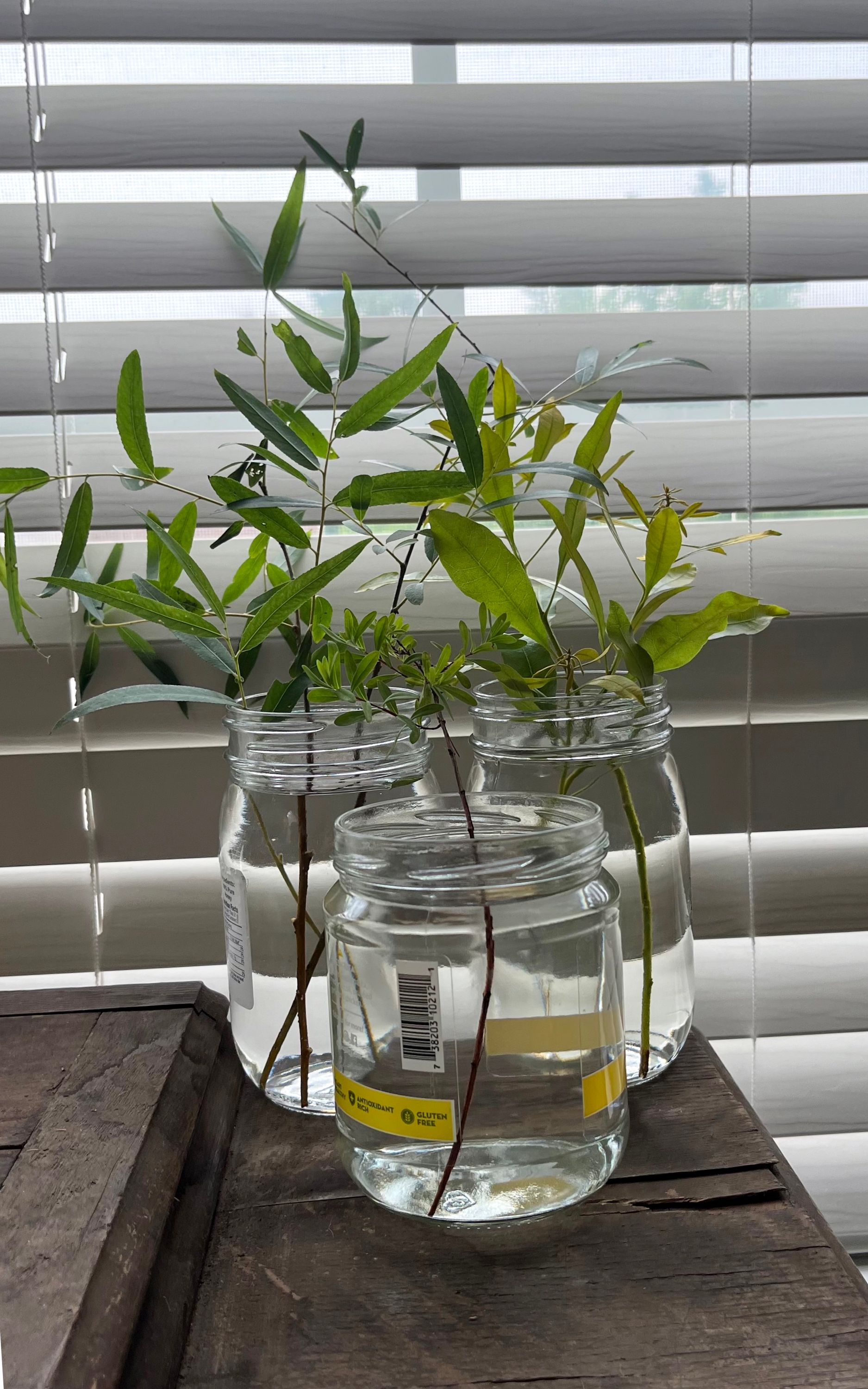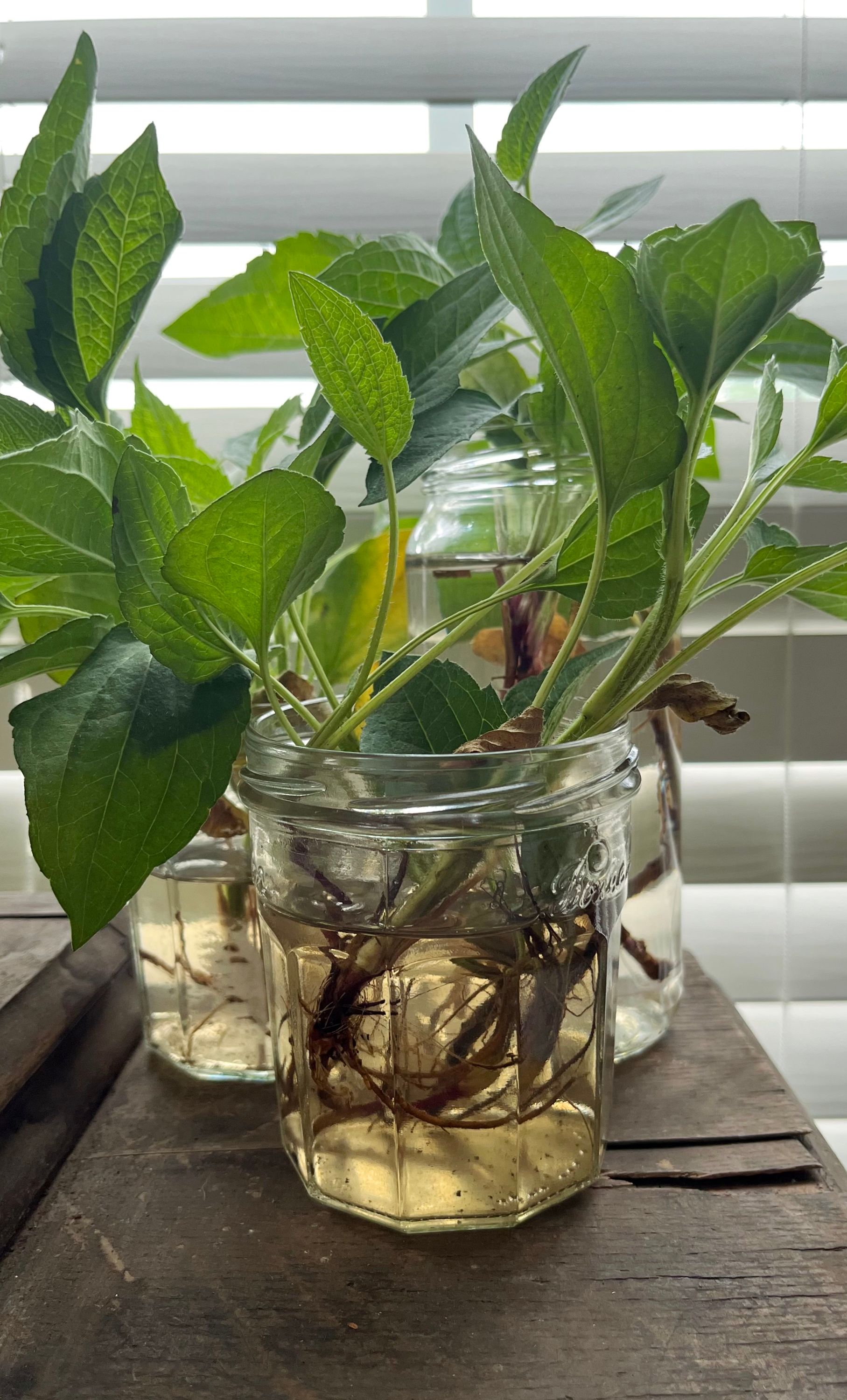Propagating Native Plants
For the last few months, I’ve been doing something that brings me great joy: removing invasive plants from my local woodland. It started small; I brought a pair of garden shears when I walked Jinx–she doesn’t require constant vigilance–and I snipped back an encroaching thorny bush at the edge of the walking path. I had no idea what the bush was, or I wouldn’t have bothered with just chopping branches; I would’ve gone whole hog and ripped the thing out of the ground. Little did I know I’d just pruned back a multiflora rose, one of the most invasive plants in North America.
Time passed, I started learning the names of plants, becoming fascinated by the native plants I saw–Philadelphia fleabane, Virginia creeper, willow oak, black cherries, greenbriar–and confused by the sheer number of plants that were not. Surely, I thought, a little untouched woodland shouldn’t be overflowing with kudzu, Japanese honeysuckle, thorny olive, and Chinese privet? Of course the evidence otherwise was right in front of me.
 Native Cuttings
Native Cuttings
 Japanese Cedar (non-native), Water Oak, Black Cherry
Japanese Cedar (non-native), Water Oak, Black Cherry  Black Willow, Southern Waxberry, St. Andrew’s Cross
Black Willow, Southern Waxberry, St. Andrew’s Cross  Black-Eyed Susans
Black-Eyed Susans
My work in removing the invasives led me to realize that if I was going to keep pulling plants out, I would need to put plants back in to cover the ground I’d just laid bare. Given that I’m doing this work in brief snatches of time before I log on to my day job, I decided that rather that go out shopping for seeds and plants, I could do something easier: I could take cuttings.
 Willow Oak, Sugar Hackberry, Muscadine
Willow Oak, Sugar Hackberry, Muscadine  River Birch, Prunus variety (non-native), Milkweed, Garden Phlox
River Birch, Prunus variety (non-native), Milkweed, Garden Phlox
Taking a cutting is exactly what it sounds like. I took a pair of snips to any plant I wanted to propagate, and cut off a small branch or two. I did this in the wilder parts of my backyard, in the woodland itself, and in my front garden. So far, I’ve amassed a collection. They’re sitting in a window of my office in jars of clean water, letting the sun drench their leaves, and working on growing roots. A few haven’t made it, but the rest are doing great, and when they put out enough roots, I’ll pot them up, get them used to the weather outside, and settle them in their new home, giving nature a helping hand.
If you want to do this yourself, I encourage you to start! I use an app called Seek by iNaturalist to identify the plants in my area, and before I take a cutting, I ask the plant in question if it wouldn’t mind. It might seem odd, but it’s something I learned from reading Braiding Sweetgrass by Robin Wall Kimmerer. Consent, even from plants, is key. If a plant in your area is struggling, taking a cutting would be like kicking it when it’s down, but if it’s flourishing and sending out suckers or shoots every which way, it may be telling you that it can take it.
When I get home, I prepare the cutting for propagating by making sure I have a good-sized glass jar and some filtered water, remove the lower 2/3rds of the cuttings foliage or branches, and pop it right on in there. The plant community is divided on whether to give your cutting sunlight or not. I keep mine out of direct sunlight, but I don’t stuff it in a dark corner. Every few days, I check to see if any of the jars need a topping up or completely fresh water. Sometimes, a cutting will perish. That’s okay, it just wasn’t meant to be. Every plant will be different, believe me.
The rest is just patience. First there will be one root, then two, then a dozen. It’s around that time that I will remove the cutting from the jar, find a pot somewhere in the house (usually a plastic one from the nursery that I’m reusing for the umpteenth time), and pot the cutting up with either a seedling mix or a generic potting mix. I’ll then put it back, give it some water and a week or two, then wait for a cloudy day–so it’s not a billion degrees–and bring it outside to find it a home.
Try to find each plant a spot similar to its original location. For example, I took a cutting from a muscadine vine that was growing in the acidic soil beneath a dozen pine trees. I won’t plant that out in full sun in a spot that doesn’t get a healthy dose of pine needle mulch every year–it wouldn’t love it. The opposite would be true for the Black-eyed Susans; they are in a rich loamy soil right now, so I’ll be finding them the edge of a small prairie when they’re ready to go out.
I’m so excited to get these plants back in the ground, but for now, they’ll keep me company as I do my daily work.
30 May 2022 native-plants projects plants
